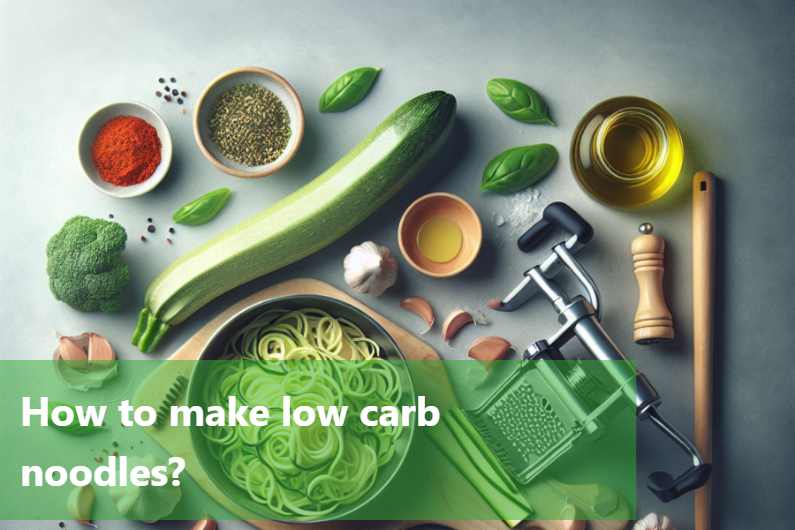
How to make low carb noodles?
In our health-focused times, many seek low carb alternatives to regular foods. One exciting option - low carb noodles! Great for folks wanting to stay healthy without guilt, these noodles use ingredients like almond flour, coconut flour, and psyllium husk. They're wildly popular for low carb lifestyles.
The appeal is not just the delicious taste. These noodles offer huge health advantages too. By cutting carbs, they help control blood sugar and manage weight. Nutrient-rich ingredients provide nourishment, making meals both tasty and good for you.
Let's explore how these awesome noodles are made, looking at the key ingredients that set them apart. We'll provide a simple step-by-step guide for preparing, cooking, and serving them. This tasty journey shows how low carb noodles can make meals more enjoyable while supporting better health. Guilt-free noodles that are both healthy and delicious - what a combo!

Ingredients for Low Carb Noodles
Making low carb noodles is easy when you pick the right stuff. Almond flour is a star here – it tastes nutty and brings in good fats and proteins with low carbs, perfect for those keeping an eye on carbs.
Coconut flour is another important player. It gives a unique texture and a bit of coconut taste. Packed with fiber, it's good for digestion and helps you feel full, great if you're working on a healthy weight. It also has iron and manganese, which are good for you.
Don't underestimate psyllium husk. It's vital for getting the right texture in your low carb noodles. It's a kind of fiber that helps your digestion and keeps blood sugar in check, a big plus for people with diabetes. It soaks up water, giving your noodles a nice feel when you bite into them.
Combine these ingredients, and you've got a tasty option to regular noodles that also gives you essential nutrients. Let's go through the simple steps to turn these into delicious low carb noodles that match your health goals.
Step-by-Step Cooking Process
Making your own low-carb noodles is a fun kitchen adventure. Let's break down the steps to guide you in creating these tasty alternatives to regular noodles.
Mixing the Ingredients: Start by mixing almond flour, coconut flour, and psyllium husk in a bowl. Blend these ingredients well to make a balanced dough.
Adding Liquid and Binding Agents: Add liquids like water or beaten eggs to the dry mix. This helps bind everything together. Be patient and slowly add the liquid while continuously mixing until the dough becomes flexible.
Kneading and Resting the Dough: Put the dough on a clean, flat surface with almond flour to avoid sticking. Gently knead the dough to make it stretchy. Let it rest for a bit so the psyllium husk can absorb moisture, giving the noodles the right texture.
Rolling Out the Dough: Divide the dough into smaller parts. Roll each section into a thin sheet. Be precise to get your preferred thickness—whether you like thin or thick noodles.
Cutting the Noodles: Once your dough sheet is ready, carefully cut it into your chosen noodle shape and size. You can go for classic shapes like fettuccine or get creative with spirals. A sharp knife or pasta cutter helps get clean edges.
Drying or Cooking Immediately: Now, you can air-dry the noodles for later or cook them right away. Cooking times may vary, so keep an eye on them to get the perfect texture.
Remember, patience and precision are key. Each step contributes to making delicious low-carb noodles, a great option for a healthier meal. Next, we'll share practical tips for cooking and serving these noodles perfectly.
Cooking and Serving Tips
Now that you've become skilled at making low-carb noodles, let's look at some easy ways to cook and serve them perfectly. These simple tips will make your low-carb noodle meals not only good for you but also really tasty.
Ways to Cook: Decide how you want to cook your noodles based on what you like and what your dish needs. Boiling them is a classic way, giving a soft and familiar texture. Another option is pan-frying, which makes them crispy and adds a special touch to your cooking. Try both to find your favorite.
Cooking Time: Whether boiling or pan-frying, keep an eye on the cooking time. Low-carb noodles usually cook faster than regular ones, so a short cooking time is usually enough. If you cook them too long, they might become mushy. Aim for that perfect al dente texture for a satisfying bite.
Sauces and Toppings: Make your low-carb noodles tastier with different sauces and toppings. Use low-carb options like olive oil and garlic for a simple but flavorful dish. Tomato-based sauces with fresh herbs or creamy Alfredo also go well with the noodles. Try different flavors to keep your meals interesting.
Serving Ideas: Get creative with how you use low-carb noodles in various dishes. Use them as a base for stir-fries, salads, or replace regular pasta in your favorite recipes. Spiralized low-carb noodles are great in noodle bowls or as a satisfying noodle soup.
Texture Boost: To add crunch, toast your low-carb noodles in a dry pan before serving. This quick step enhances their nutty flavor and gives a subtle crunch. Be careful not to toast them too much, as it can change the texture.
Garnish for Looks: Make your low-carb noodle dishes look fancy by adding fresh herbs, grated cheese, or a sprinkle of crushed nuts. These finishing touches not only make your dish visually appealing but also add extra layers of flavor.
By using these cooking and serving tips, you'll make your low-carb noodles into delicious meals that are good for you. Now, let's summarize the main points and encourage you to try these noodles in your everyday meals.

A healthy snack option
In summary, we've explored a healthier and yummy option – low carb noodles, which are a great substitute for regular pasta. We started by noticing that lots of people like low carb diets. This led to the use of ingredients like almond flour, coconut flour, and psyllium husk to make these nutritious noodles.
We talked about the important ingredients, each bringing its special qualities to the table, and explained the step-by-step process to make these noodles just right – from mixing and kneading to rolling and cutting.
Then, we got practical with cooking and serving tips, sharing different methods, ideal cooking times, and cool ways to make your low carb noodle dishes more exciting. We emphasized how versatile these noodles are, suggesting readers try different sauces, toppings, and serving ideas to match their tastes.
To sum it up, we highlighted the benefits of adding low carb noodles to your diet. Not only do they cut down on carbs, but they also give you a mix of good nutrients for overall well-being. The takeaway is clear: start a journey toward a healthier lifestyle by including low carb options in your meals.
So, why not give low carb noodle recipes a try? Boil or pan-fry them, pair with savory or creamy sauces, and get creative with serving – there are endless possibilities. By making small but important changes in your diet, you can enjoy tasty meals while also looking out for your long-term health. Here's to delicious and health-conscious cooking! Cheers!
This Blog post is an initiative by Lo! Foods, to provide accurate and Nutritionist / Doctor approved information related to Health. Lo! Foods is India's leading brand for Everyday Functional Foods. Foods designed for specific Health conditions or Needs. Lo! Foods also runs India's largest range of Low Carb Healthy Cloud Kitchens, under the brand names of Lo!, ProteinChef, ATH (All Things Healthy) and DiabeSmart.



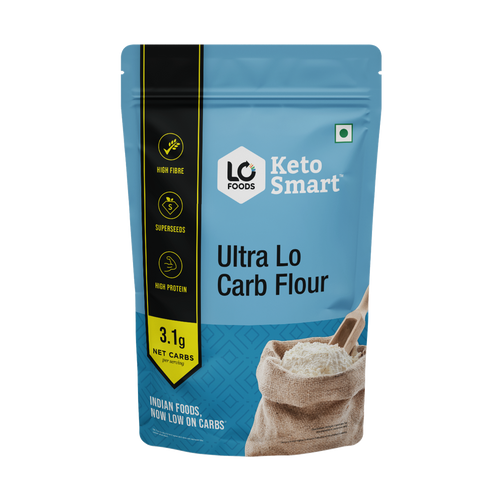
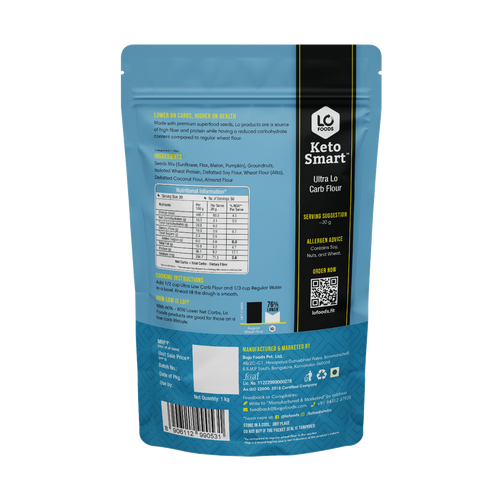
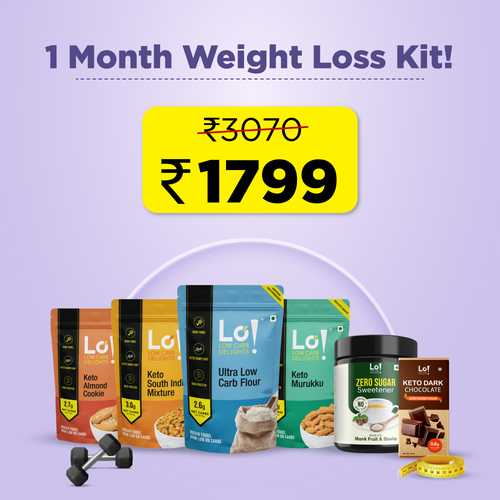
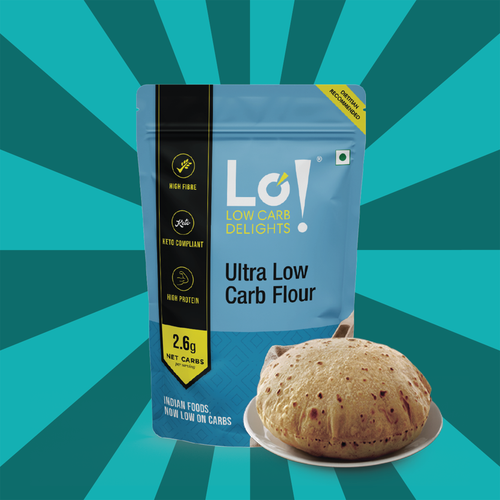


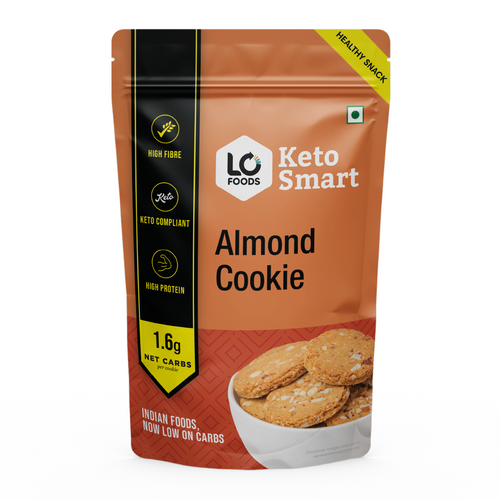

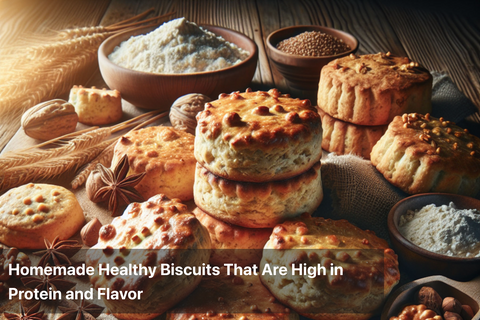
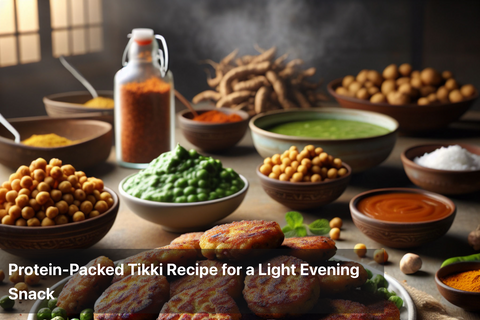
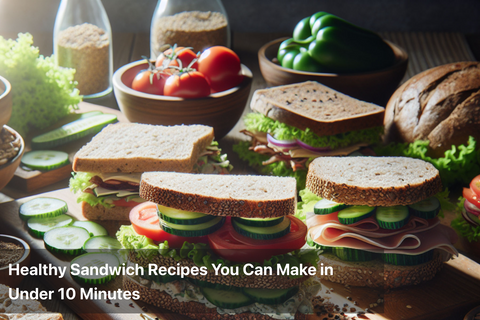
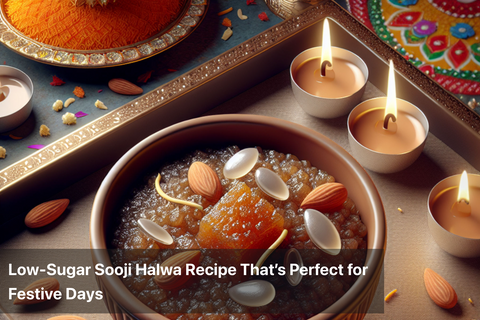
Leave a comment
Your email address will not be published.